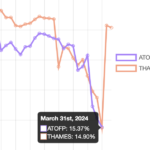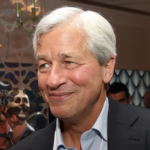Last week the market cap of Amazon briefly crossed the $1 trillion barrier, putting it in the rarefied company of Apple. It isn’t just the size that makes these stocks special, but also the growth.
Nine months ago we looked at how size had been a winning bet in the S&P 500 index. Since then, evidence for this thesis has only got stronger. Shares of Microsoft, Apple, Google and Amazon – let’s call them MAGA stocks – have gained $1 trillion of market capitalisation this year. That’s 55% of the year-to-date gain for the entire S&P500.

If we accept that the valuation of these companies is something more than a bubble, we need to understand what makes them so special. Given their market power and social importance as well as their size, answering this question is an urgent issue in public policy.
Which fundamental variable should be considered? PE isn’t much help here. Trailing price-to-earnings ratios are big for Amazon, modest for Apple and have grown dramatically for Microsoft and Google/Alphabet. The companies are generating a lot of revenue but Apple excepted, shareholders are paying a lot to own it.
Volatility is more interesting. Investors that use a risk budgeting or risk parity approach, might underweight stocks with high volatility and overweight those with low vol. Historical volatility (using a 90 day window) used to regularly breach 40% for Amazon and seldom dropped below 25% for Alphabet/Google.
Five years ago, the relatively high volatility of US technology stocks was a puzzle for some analysts. A trio of academics, Söhnke Bartram, Gregory Brown and Rene Stulz, showed in a 2011 paper that US stocks were more volatile than those listed in other countries, and moreover this volatility was not systemically connected to the index, but was rather an idiosyncratic feature of individual stocks.
This was a puzzle because stocks with the higher idiosyncratic volatility tended to have lower average returns. Orthodox finance theory had long equated volatility with risk, and treated it as something to be minimised (in order to increase portfolio returns). Not true, said Bartram, Brown and Stulz, arguing that US stocks somehow had ‘good volatility’ that increased their returns above the index average.
By controlling for other variables, the three authors went on to show that ‘good volatility’ was a product of greater research & development expenditure (as a percentage of revenues) at US-based companies. In other words, investors were ignoring what finance theory said and buying US companies with outsized R&D expenditure in order to profit from innovation.
Now fast forward from 2011. Although their study was a regression of data available at the time, it turns out that Bartram, Brown and Stulz made an inadvertent prophecy. ‘Good volatility’ and R&D expenditure may explain the gigantism in the S&P 500 that we have seen since.
Orthodox finance theory has been debunked: With ‘good volatility’ you don’t need to hold the index in order to diversify away idiosyncratic risk. You just want to capture the innovation and as our chart above shows, you only should bother owning the four or five biggest names to do it.
This squares with what some of these companies have said. Google, when it reorganised itself into Alphabet, made clear that the cash-rich search engine business was only part of its value. The rest was a series of ‘alpha bets’ on things like self-driving cars or deep learning. Amazon and Microsoft are similar in the way that they combine cash generation with a portfolio of options on R&D innovation.
Indeed, there is some evidence that these companies are in an arms race to increase R&D spending as a percentage of revenue, and thus maintain this option value. In the chart below, we see that Amazon increased R&D from 7.5% of revenue in 2010 to 17% today (unlike other companies, Amazon reports this item as ‘research & content’). Even Apple, which makes so much cash that R&D long seemed like an afterthought, doubled its spending from 3% to 6.6% of revenues today.
But there is now a more sinister feel to this arms race than the innovation-must-be-good argument of 2011. Earlier this year Bartram, Brown and Stulz got together again for a follow up paper. They found that since their previous study, idiosyncratic volatility of US stocks had fallen to a 50 year low. This was not connected to macroeconomic effects, the new study showed.
There were two factors that were behind the phenomenon, the authors found. Firstly, many of the most innovative young companies were avoiding public markets and staying private. That lowered the volatility of those that remained public. And what about those still-public companies? Their volatility was lowered further because competition had declined.
Indeed, the historical volatility of Microsoft fell below that of the S&P 500 index itself this year, while Amazon, whose volatility averaged 30% from 2010 to 2015, now has volatility below 20%. In the last couple of years, the MAGA stocks have reduced competition either by buying up rivals (as Microsoft has done) or putting them out of business as Amazon is freely doing in retail.
Arguably, one reason for the MAGA stocks’ value is no longer just about R&D optionality, but also their unfettered power as competition killers. That is something policymakers are only just waking up to. Or perhaps this is what is really meant by ‘make America great again’.
 Levelling the Playing Field
Levelling the Playing Field
 Barclays and Labour's growth plan
Barclays and Labour's growth plan
 Plummeting bonds reflect souring UK mood for outsourcing and privatisation
Plummeting bonds reflect souring UK mood for outsourcing and privatisation
 Dimon rolls trading dice with excess capital
Dimon rolls trading dice with excess capital